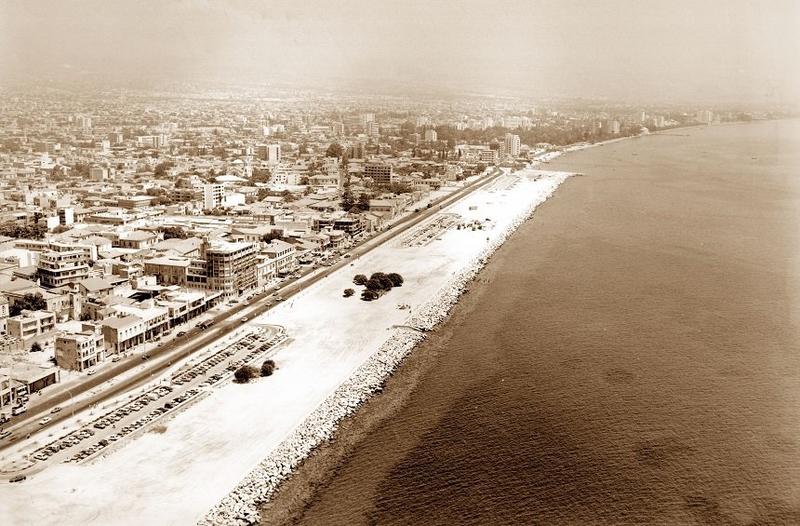
The identity of Limassol is defined by its relationship with the sea. This is why the changes of the city's coastal front are the markers of evolution over the years. The construction of the seafront walkway is a project that changed the image of the city, and in particular, it's most important characteristic: the coastal front.
After 1878, the British decided that they wanted Limassol to be the main port, and thus laid the foundations for some drastic changes to the city, which, during the Ottoman period, was reminiscent of an enclosed fortress, with the walls of the buildings reaching the shore.
And so, a passage began being constructed between the city's buildings and the sea, which eventually evolved into the seafront road. Around 1930, the creation of an illuminated walkway along the seafront upgraded the area.
Gradually, a few cafes and a couple of recreation centers and hotels began to appear, attracting people to the seafront road.
After the island's independence, and with Limassol exhibiting its potential to be transformed into a business hub, extensive works on the coastal pedestrian road brought it even closer to its present form. The works for the creation of the seafront park at the start of the 21st century brought to completion the image we all know and love today.
And so, while the coastal front of Limassol at the start of the 20th century was mainly a place for sailors and port employees, today, it is a recreational destination for everyone.
Photos: Limassol Historical Archives, Lemesou Mnimes, Limassol Municipality
* NOTE: The tributes of the Project "History of Limassol" present information that has emerged from historical research thus far. Any new data is embedded into the tributes, once it has been confirmed.